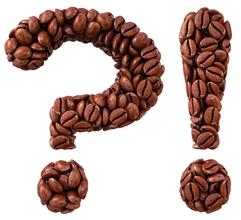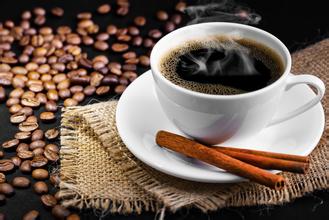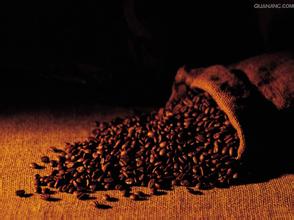Description of Bolivian Coffee Flavor introduction to the taste of boutique coffee beans
Bolivia's high-quality manor, altitude is very high, the environment of low temperature all the year round, so that coffee fruit growth is slow, close enough, aroma is charming, floral flavor is obvious, such as careful processing, picking the same maturity of cherries, often have a clean and delicate high-grade taste, this elegant vanilla and peach flavor is very attractive, this champion bean flower aroma is very diverse, vanilla and honey sweet feeling is very lasting
One third of Bolivia's territory is Andean, rugged terrain, mainly road transport, accounting for more than 85 per cent of transport. The main railway and road networks are concentrated in the west, and remote areas rely on air communication. But road coverage is the lowest in South America. Moreover, there is also the Ronggas Highway, the world's most dangerous road known as the "Road of Death". It has no developed economy and is one of the poorest countries in South America. However, the territory has beautiful lake scenery and unique scenery of the Andes Mountains. The Salt Lake of Uyuni, known as the mirror of the sky, is a wonder of the world.
We know that Arabica coffee cannot be grown at altitudes higher than 2000 meters, and if the altitude is too high, the coffee trees will freeze due to the low temperature. Bolivian coffee is mainly grown in the Yungas region northeast of La Paz. Bordering the Amazon River basin, it is about 1500-2500 meters above sea level and has an average annual temperature of about 10-15 ° C. Therefore, the appropriate temperature for coffee growth is guaranteed, and coffee plants are protected from frost damage. In addition, Bolivia coffee growing areas dry and wet seasons, fertile soil, is the development of fine coffee paradise. Bolivian coffee is usually hand-picked and processed by washing.
Early Bolivian coffee was of poor quality and poorly marketed. The coffee cherries are usually picked and then simply peeled and sent all the way to the processing plant. Due to inadequate infrastructure, transportation is underdeveloped. Coffee farmers have to overcome rugged mountain roads to transport beans to higher altitudes in La Paz for washing. Coffee cherries that don't get to the processing plant in time can easily ferment and rot on wet mountain roads. As a result, the coffee that was originally of good quality was destroyed.
Bolivia has made many efforts to improve the quality of coffee, stimulate the enthusiasm of coffee farmers, and make coffee farmers more aware of fine coffee. After the introduction of COE competition, in the first COE competition held in 2004, there were 13 high-quality bean cups with a total score of 84 points or more, and the champion bean score was as high as 90.44 points, and the price of raw beans also rose accordingly. In addition, in order to solve the problem of late post-treatment, a washing treatment plant has also been built in the Yangas area. Let the freshly picked coffee be post-processed in the fastest time to prevent quality degradation due to transportation. Coffee farmers are also constantly refining their own cultivation techniques. In short, Bolivia has finally completed a magnificent turn in quality through its own efforts in all aspects.

Important Notice :
前街咖啡 FrontStreet Coffee has moved to new addredd:
FrontStreet Coffee Address: 315,Donghua East Road,GuangZhou
Tel:020 38364473
- Prev

Characteristics of Flavor and Taste in Rosa Coffee Variety producing area introduction to the country of origin of boutique coffee bean manor
In January 2016, Aiyi Manor sent samples of these 33 new coffee varieties to the United States, asking the world coffee industry leader, former president of the American Fine Coffee Association (SCAA) and one of the founders of the Coffee quality Institute (CQI) TedLingle to test the cup. the cup test scores of the first five varieties were 84.25,84.5,84.5,85.5 and 87, with the highest score.
- Next

Yega Sheffivoka boutique coffee bean flavor and taste characteristics of individual coffee
Yejassefi's coffee trees were planted by European monks (a bit like Belgian monks growing wheat to brew beer) and were later transferred to farmers or cooperatives. Yejia Xuefei is actually constructed by surrounding coffee communities or cooperatives, including Edido Idido, Hafusa Harfusa, Hama Hama, Biloya, near Fog Valley Misty valley, all washed with water, but also
Related
- Detailed explanation of Jadeite planting Land in Panamanian Jadeite Manor introduction to the grading system of Jadeite competitive bidding, Red bid, Green bid and Rose Summer
- Story of Coffee planting in Brenka region of Costa Rica Stonehenge Manor anaerobic heavy honey treatment of flavor mouth
- What's on the barrel of Blue Mountain Coffee beans?
- Can American coffee also pull flowers? How to use hot American style to pull out a good-looking pattern?
- Can you make a cold extract with coffee beans? What is the right proportion for cold-extracted coffee formula?
- Indonesian PWN Gold Mandrine Coffee Origin Features Flavor How to Chong? Mandolin coffee is American.
- A brief introduction to the flavor characteristics of Brazilian yellow bourbon coffee beans
- What is the effect of different water quality on the flavor of cold-extracted coffee? What kind of water is best for brewing coffee?
- Why do you think of Rose Summer whenever you mention Panamanian coffee?
- Introduction to the characteristics of authentic blue mountain coffee bean producing areas? What is the CIB Coffee Authority in Jamaica?

